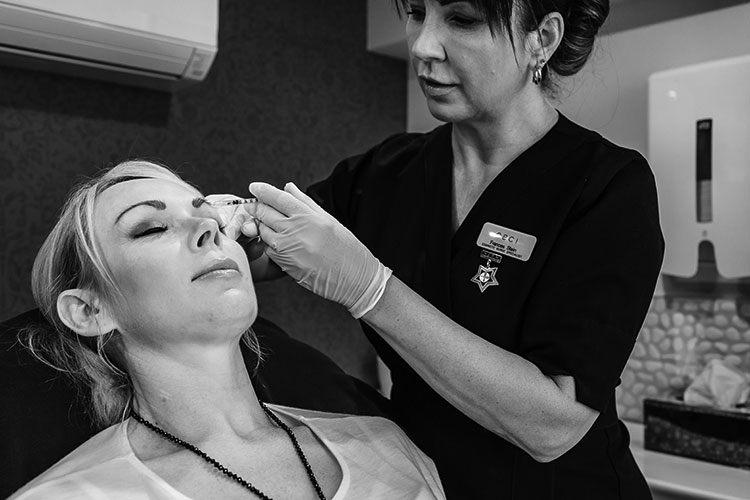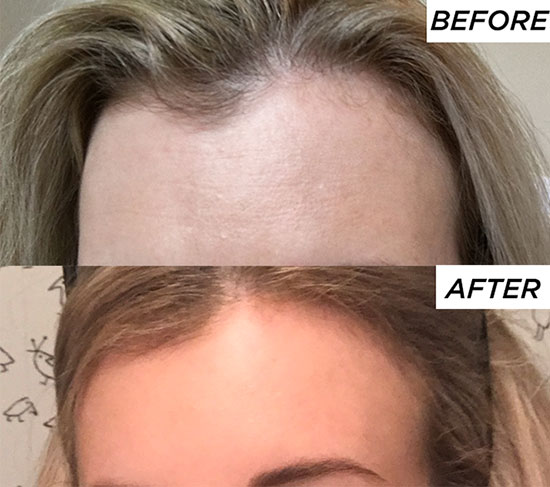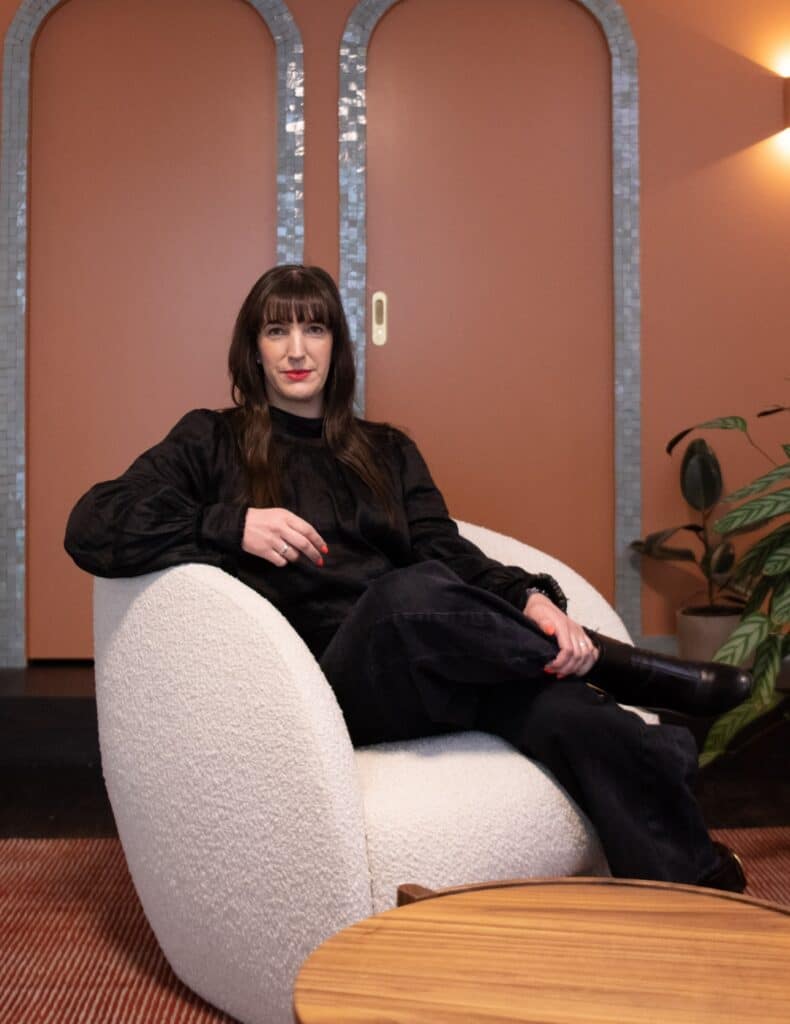
Been thinking about trying Botox?
Do I need it? Does it hurt? Will people be able to tell I’ve done it? So many questions swirl around in your head when you’re contemplating any kind of injectable anti-ageing treatment. We spoke to Caci’s Academy Manager Sonya Hatangadi to get the low down on everything Botox. We also tried the treatment out ourselves so we could give you all the necessary info, first-hand…
What’s the science behind Botox – what is the chemical involved and what does it do?
Botox has been used in over 20 million treatments worldwide, and holds a robust safety and efficacy profile. It has been extensively researched and is precise and predictable in the way that it works. The active ingredient in Botox is made in much the same way that Penicillin is. This natural purified protein is considered the gold standard of muscle relaxants and can used to temporarily relax the wrinkle-causing muscles.
It’s a toxin – so is it safe to put in my face? How long has Botox been around?
Botulinum toxin type A, better known as Botox is a highly purified protein. Its safety profile is well established, and has been used for over 20 years, and is one of the safest and most popular cosmetic procedures worldwide.
On which areas of the face can Botox be used?
The most commonly treated areas are forehead lines, frown lines, and crow’s feet around the eyes.
Are there any less conventional uses for Botox?
You can treat the masseters (jaw muscles) to help shape the contour of your face as well as aid in the prevention of teeth clenching. Botox is also used to treat Hyperhidrosis, a medical condition in which a person sweats excessively and unpredictably, which works by blocking the chemicals that turn on the sweat glands. Common areas for treatment of Hyperhidrosis are the underarms and palms of your hands.
At what age should I start thinking about Botox? And is there such a thing as ‘preventative’ Botox, to prevent wrinkles forming in certain areas?
It’s easier to prevent wrinkles, than to try and correct them later, so treating areas before lines and wrinkles develop, helps to relax the active muscles before allowing possible wrinkles to form. If you’re concerned with lines and wrinkles, then an appropriate time to start considering Botox is at the time fine lines remain visible at rest.
If I have an event or wedding to prepare for, what is the optimum time to have my Botox treatment done?
Generally people will start to see results within the first week of their treatment, and it can take from 10-14 days for full results to be visible. For a refreshed, wrinkle-reduced look on your wedding day or for that special event, having Botox treatments at least one month prior can soften lines and wrinkles with results lasting up to three to four months.
How many units or injections are typically used in each area? Which areas usually require more attention?
With appearance medicine treatments, the goal should always be to bring out the best version of you… it’s about enhancing, refreshing and rejuvenating, rather than doing anything too dramatic. One size doesn’t necessarily fit all when it comes to softening lines and wrinkles so you should work with a Botox practitioner whose priority is to get the best result for you.
How long does a typical treatment take? Can I go in my lunch break?
Yes, of course! The treatment is quick and simple, and takes approximately 15 to 20 minutes. There is no down time, and no anaesthesia required.
What will I look like right after the treatment? What will I look like the day after? Will people be able to tell?
You may notice some redness which will subside over approximately 15-20 minutes, and some people may experience a minor headache or bruising. If it’s your first treatment, you might have a ‘tight’ feeling or a sort of ‘heavy’ sensation (particularly with the forehead lines), but this should subside within a week or so. If you do have some redness or slight bruising, a dusting of mineral powder will quickly correct this.
What will I look like after? I don’t want to look frozen!
Results will vary from person to person and will also be dependent on what sort of result you’re after. Most Botox practitioners will recommend a ‘natural’ look to enhance your features and refresh your face. You might notice that you have slightly less movement in your forehead and you may struggle to get your muscles to frown (not a bad thing in our opinion!) for the first week or so. However, you should still be able to move your eyebrows and show expression.
Here’s our forehead line result approximately 10 days after treatment:

Does it hurt? What does it feel like?
If you’re not good with needles then it’s understandable that you might feel apprehensive about this process. However, the size of the needles used for Botox are very small and well tolerated, so the level of discomfort is minimal. My Botox practitioner Teri at Caci High Street calls it “a little scratch” and it really is the tiniest prickle. If you are feeling anxious, let the staff know during the consultation stage and they will ensure you have all the necessary information involved in the treatment, as well as addressing any questions to minimise anxiety. Usually a stress ball is an adequate distraction.
How much does it cost? Do you charge by unit or area?
Because Botox is so bespoke, and based on addressing an individual’s concerns, the number of units of Botox required do vary. Clinics such as Caci offer interest free payment plans which will allow you to pay off your treatments throughout the year, making it as affordable (or even cheaper!) than your weekly manicure. Different clinics have different pricing options, but one unit is usually around $20. Your total cost will depend on how many areas you are having treated and what your concerns are.
How often will I need it? Do results vary each time?
The results of Botox differ between people, but in general, results can last 3-4 months. Most people will start to see a gradual return of movement after about 3 months but there are a lot of factors, including stress and exercise, which can mean you metabolise the Botox quicker. You should always book in a review for around two weeks after, so you can address any concerns, ask any further questions or have a follow up treatment, to ensure you’re getting the best possible results. Regular Botox treatments can help improve the longevity of the treatment’s effect – so, the more you have long-term, the longer the treatment will last each time. In addition, regular treatment may help reduce static wrinkles (those present even when your face is at rest).
What are the risks or side effects?
Most people will have little to minor side effects, after the treatment. Possible side effects include pain, redness, bruising, swelling, and stinging, which should only last approximately 15-20 minutes. Some people may experience a minor headache – if you do, don’t take aspirin afterwards as this medication can thin the blood and lead to post-Botox bruising.
As much as a Botox expert can take every care not to hit blood vessels, bruising can still happen. What is the best way to cover these and heal them as quickly as possible?
Botox bruises tend to be small and short-lived. If a bruise were to occur, the best way to manage this would be with Hirdoid cream…and a good concealer until the bruise has subsided.
Can the effects of Botox be reversed? How long does it take to wear off?
The effects of Botox can’t be reversed and can last between 3 and 4 months. After this time, you will notice the movement and the lines in the area will return.










